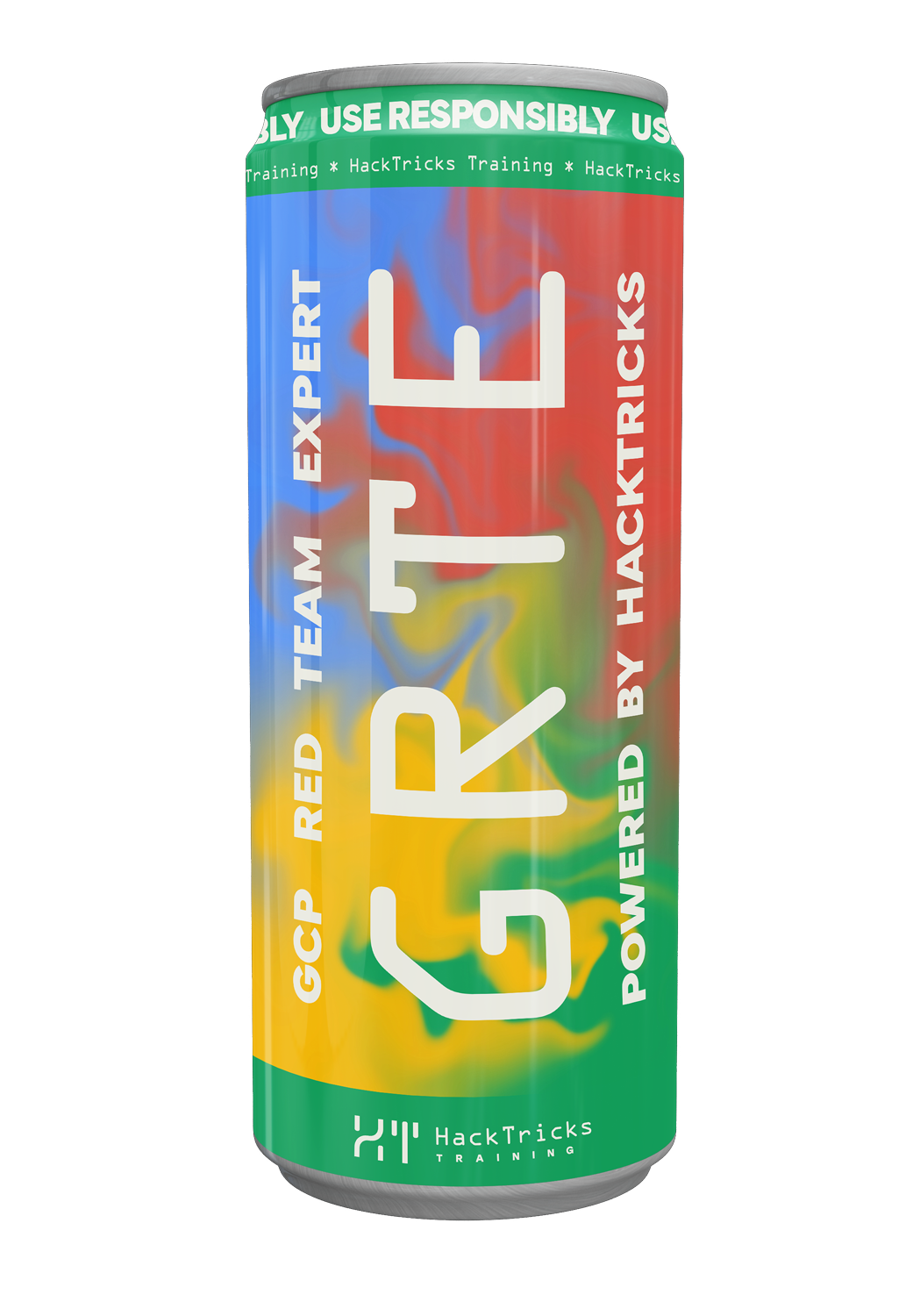Trucos JS Varios e Información Relevante
Reading time: 12 minutes
tip
Aprende y practica Hacking en AWS: HackTricks Training AWS Red Team Expert (ARTE)
HackTricks Training AWS Red Team Expert (ARTE)
Aprende y practica Hacking en GCP:  HackTricks Training GCP Red Team Expert (GRTE)
HackTricks Training GCP Red Team Expert (GRTE) Aprende y practica Hacking en Azure:
Aprende y practica Hacking en Azure:  HackTricks Training Azure Red Team Expert (AzRTE)
HackTricks Training Azure Red Team Expert (AzRTE)
Apoya a HackTricks
- Revisa los planes de suscripción!
- Únete al 💬 grupo de Discord o al grupo de telegram o síguenos en Twitter 🐦 @hacktricks_live.
- Comparte trucos de hacking enviando PRs a los HackTricks y HackTricks Cloud repositorios de github.
Fuzzing de Javascript
Caracteres de Comentario JS Válidos
//This is a 1 line comment
/* This is a multiline comment*/
#!This is a 1 line comment, but "#!" must to be at the beggining of the line
-->This is a 1 line comment, but "-->" must to be at the beggining of the line
for (let j = 0; j < 128; j++) {
for (let k = 0; k < 128; k++) {
for (let l = 0; l < 128; l++) {
if (j == 34 || k ==34 || l ==34)
continue;
if (j == 0x0a || k ==0x0a || l ==0x0a)
continue;
if (j == 0x0d || k ==0x0d || l ==0x0d)
continue;
if (j == 0x3c || k ==0x3c || l ==0x3c)
continue;
if (
(j == 47 && k == 47)
||(k == 47 && l == 47)
)
continue;
try {
var cmd = String.fromCharCode(j) + String.fromCharCode(k) + String.fromCharCode(l) + 'a.orange.ctf"';
eval(cmd);
} catch(e) {
var err = e.toString().split('\n')[0].split(':')[0];
if (err === 'SyntaxError' || err === "ReferenceError")
continue
err = e.toString().split('\n')[0]
}
console.log(err,cmd);
}
}
}
//From: https://balsn.tw/ctf_writeup/20191012-hitconctfquals/#bounty-pl33z
// From: Heyes, Gareth. JavaScript for hackers: Learn to think like a hacker (p. 43). Kindle Edition.
log=[];
for(let i=0;i<=0xff;i++){
for(let j=0;j<=0xfff;j++){
try {
eval(`${String.fromCodePoint(i,j)}%$£234$`)
log.push([i,j])
}catch(e){}
}
}
console.log(log)//[35,33],[47,47]
Caracteres de nueva línea JS válidos
//Javascript interpret as new line these chars:
String.fromCharCode(10) //0x0a
String.fromCharCode(13) //0x0d
String.fromCharCode(8232) //0xe2 0x80 0xa8
String.fromCharCode(8233) //0xe2 0x80 0xa8
for (let j = 0; j < 65536; j++) {
try {
var cmd = '"aaaaa";' + String.fromCharCode(j) + '-->a.orange.ctf"'
eval(cmd)
} catch (e) {
var err = e.toString().split("\n")[0].split(":")[0]
if (err === "SyntaxError" || err === "ReferenceError") continue
err = e.toString().split("\n")[0]
}
console.log(`[${err}]`, j, cmd)
}
//From: https://balsn.tw/ctf_writeup/20191012-hitconctfquals/#bounty-pl33z
Espacios JS Válidos en la llamada a función
// Heyes, Gareth. JavaScript for hackers: Learn to think like a hacker (pp. 40-41). Kindle Edition.
// Check chars that can be put in between in func name and the ()
function x(){}
log=[];
for(let i=0;i<=0x10ffff;i++){
try {
eval(`x${String.fromCodePoint(i)}()`)
log.push(i)
}catch(e){}
}
console.log(log)v//9,10,11,12,13,32,160,5760,8192,8193,8194,8195,8196,8197,8198,8199,8200,8201,8202,813 232,8233,8239,8287,12288,65279
Caracteres válidos para generar cadenas
// Heyes, Gareth. JavaScript for hackers: Learn to think like a hacker (pp. 41-42). Kindle Edition.
// Check which pairs of chars can make something be a valid string
log = []
for (let i = 0; i <= 0x10ffff; i++) {
try {
eval(`${String.fromCodePoint(i)}%$£234${String.fromCodePoint(i)}`)
log.push(i)
} catch (e) {}
}
console.log(log) //34,39,47,96
//single quote, quotes, backticks & // (regex)
Surrogate Pairs BF
Esta técnica no será muy útil para XSS, pero podría ser útil para eludir las protecciones de WAF. Este código de python recibe como entrada 2 bytes y busca pares de sustitutos que tengan el primer byte como el último byte del par de sustitutos alto y el último byte como el último byte del par de sustitutos bajo.
def unicode(findHex):
for i in range(0,0xFFFFF):
H = hex(int(((i - 0x10000) / 0x400) + 0xD800))
h = chr(int(H[-2:],16))
L = hex(int(((i - 0x10000) % 0x400 + 0xDC00)))
l = chr(int(L[-2:],16))
if(h == findHex[0]) and (l == findHex[1]):
print(H.replace("0x","\\u")+L.replace("0x","\\u"))
Más información:
- https://github.com/dreadlocked/ctf-writeups/blob/master/nn8ed/README.md
- https://mathiasbynens.be/notes/javascript-unicode https://mathiasbynens.be/notes/javascript-encoding
javascript{}: Fuzzing de Protocolo
// Heyes, Gareth. JavaScript for hackers: Learn to think like a hacker (p. 34). Kindle Edition.
log=[];
let anchor = document.createElement('a');
for(let i=0;i<=0x10ffff;i++){
anchor.href = `javascript${String.fromCodePoint(i)}:`;
if(anchor.protocol === 'javascript:') {
log.push(i);
}
}
console.log(log)//9,10,13,58
// Note that you could BF also other possitions of the use of multiple chars
// Test one option
let anchor = document.createElement('a');
anchor.href = `javascript${String.fromCodePoint(58)}:alert(1337)`;
anchor.append('Click me')
document.body.append(anchor)
// Another way to test
<a href="javascript:alert(1337)">Test</a>
Fuzzing de URL
// Heyes, Gareth. JavaScript for hackers: Learn to think like a hacker (pp. 36-37). Kindle Edition.
// Before the protocol
a = document.createElement("a")
log = []
for (let i = 0; i <= 0x10ffff; i++) {
a.href = `${String.fromCodePoint(i)}https://hacktricks.wiki`
if (a.hostname === "hacktricks.xyz") {
log.push(i)
}
}
console.log(log) //0,1,2,3,4,5,6,7,8,9,10,11,12,13,14,15,16,17,18,19,20,21,22,23,24,25,26,27,28,29,30,31,32
// Between the slashes
a = document.createElement("a")
log = []
for (let i = 0; i <= 0x10ffff; i++) {
a.href = `/${String.fromCodePoint(i)}/hacktricks.xyz`
if (a.hostname === "hacktricks.xyz") {
log.push(i)
}
}
console.log(log) //9,10,13,47,92
HTML Fuzzing
// Heyes, Gareth. JavaScript for hackers: Learn to think like a hacker (p. 38). Kindle Edition.
// Fuzzing chars that can close an HTML comment
let log = []
let div = document.createElement("div")
for (let i = 0; i <= 0x10ffff; i++) {
div.innerHTML = `<!----${String.fromCodePoint(i)}><span></span>-->`
if (div.querySelector("span")) {
log.push(i)
}
}
console.log(log) //33,45,62
Analizando atributos
La herramienta Hackability inspector de Portswigger ayuda a analizar los atributos de un objeto javascript. Ver: https://portswigger-labs.net/hackability/inspector/?input=x.contentWindow&html=%3Ciframe%20src=//subdomain1.portswigger-labs.net%20id=x%3E
.map archivos js
- Truco para descargar archivos .map js: https://medium.com/@bitthebyte/javascript-for-bug-bounty-hunters-part-2-f82164917e7
- Puedes usar esta herramienta para analizar estos archivos https://github.com/paazmaya/shuji
"--" Asignación
El operador de decremento -- también es una asignación. Este operador toma un valor y luego lo decrementa en uno. Si ese valor no es un número, se establecerá en NaN. Esto se puede usar para eliminar el contenido de las variables del entorno.
.png)
.png)
Trucos de Funciones
.call y .apply
El método .call de una función se utiliza para ejecutar la función.
El primer argumento que espera por defecto es el valor de this y si nada se proporciona, window será ese valor (a menos que se use modo estricto).
function test_call() {
console.log(this.value) //baz
}
new_this = { value: "hey!" }
test_call.call(new_this)
// To pass more arguments, just pass then inside .call()
function test_call() {
console.log(arguments[0]) //"arg1"
console.log(arguments[1]) //"arg2"
console.log(this) //[object Window]
}
test_call.call(null, "arg1", "arg2")
// If you use the "use strict" directive "this" will be null instead of window:
function test_call() {
"use strict"
console.log(this) //null
}
test_call.call(null)
//The apply function is pretty much exactly the same as the call function with one important difference, you can supply an array of arguments in the second argument:
function test_apply() {
console.log(arguments[0]) //"arg1"
console.log(arguments[1]) //"arg2"
console.log(this) //[object Window]
}
test_apply.apply(null, ["arg1", "arg2"])
Funciones de flecha
Las funciones de flecha te permiten generar funciones en una sola línea más fácilmente (si las entiendes)
// Traditional
function (a){ return a + 1; }
// Arrow forms
a => a + 100;
a => {a + 100};
// Traditional
function (a, b){ return a + b + 1; }
// Arrow
(a, b) => a + b + 100;
// Tradictional no args
let a = 4;
let b = 2;
function (){ return a + b + 1; }
// Arrow
let a = 4;
let b = 2;
() => a + b + 1;
Entonces, la mayoría de las funciones anteriores son en realidad inútiles porque no las estamos guardando en ningún lugar para guardarlas y llamarlas. Ejemplo creando la función plusone:
// Traductional
function plusone(a) {
return a + 1
}
//Arrow
plusone = (a) => a + 100
Función bind
La función bind permite crear una copia de una función modificando el objeto this y los parámetros dados.
//This will use the this object and print "Hello World"
var fn = function (param1, param2) {
console.info(this, param1, param2)
}
fn("Hello", "World")
//This will still use the this object and print "Hello World"
var copyFn = fn.bind()
copyFn("Hello", "World")
//This will use the "console" object as "this" object inside the function and print "fixingparam1 Hello"
var bindFn_change = fn.bind(console, "fixingparam1")
bindFn_change("Hello", "World")
//This will still use the this object and print "fixingparam1 Hello"
var bindFn_thisnull = fn.bind(null, "fixingparam1")
bindFn_change("Hello", "World")
//This will still use the this object and print "fixingparam1 Hello"
var bindFn_this = fn.bind(this, "fixingparam1")
bindFn_change("Hello", "World")
note
Tenga en cuenta que al usar bind puede manipular el objeto this que se va a utilizar al llamar a la función.
Fuga de código de función
Si puede acceder al objeto de una función, puede obtener el código de esa función.
function afunc() {
return 1 + 1
}
console.log(afunc.toString()) //This will print the code of the function
console.log(String(afunc)) //This will print the code of the function
console.log(this.afunc.toString()) //This will print the code of the function
console.log(global.afunc.toString()) //This will print the code of the function
En los casos en que la función no tiene ningún nombre, aún puedes imprimir el código de la función desde dentro:
;(function () {
return arguments.callee.toString()
})()(function () {
return arguments[0]
})("arg0")
Algunas maneras aleatorias de extraer el código de una función (incluso comentarios) de otra función:
;(function () {
return (retFunc) => String(arguments[0])
})((a) => {
/* Hidden commment */
})()(function () {
return (retFunc) => Array(arguments[0].toString())
})((a) => {
/* Hidden commment */
})()(function () {
return String(this)
}).bind(() => {
/* Hidden commment */
})()((u) => String(u))((_) => {
/* Hidden commment */
})((u) => (_) => String(u))((_) => {
/* Hidden commment */
})()
Sandbox Escape - Recuperando el objeto window
El objeto Window permite acceder a funciones definidas globalmente como alert o eval.
// Some ways to access window
window.eval("alert(1)")
frames
globalThis
parent
self
top //If inside a frame, this is top most window
// Access window from document
document.defaultView.alert(1)
// Access document from a node object
node = document.createElement('div')
node.ownerDocument.defaultView.alert(1)
// There is a path property on each error event whose last element is the window
<img src onerror=event.path.pop().alert(1337)>
// In other browsers the method is
<img src onerror=event.composedPath().pop().alert(1337)>
// In case of svg, the "event" object is called "evt"
<svg><image href=1 onerror=evt.composedPath().pop().alert(1337)>
// Abusing Error.prepareStackTrace to get Window back
Error.prepareStackTrace=function(error, callSites){
2 callSites.shift().getThis().alert(1337);
3 };
4 new Error().stack
// From an HTML event
// Events from HTML are executed in this context
with(document) {
with(element) {
//executed event
}
}
// Because of that with(document) it's possible to access properties of document like:
<img src onerror=defaultView.alert(1337)>
<img src onerror=s=createElement('script');s.append('alert(1337)');appendChild(s)>
Punto de interrupción en el acceso al valor
// Stop when a property in sessionStorage or localStorage is set/get
// via getItem or setItem functions
sessionStorage.getItem = localStorage.getItem = function (prop) {
debugger
return sessionStorage[prop]
}
localStorage.setItem = function (prop, val) {
debugger
localStorage[prop] = val
}
// Stop when anyone sets or gets the property "ppmap" in any object
// For example sessionStorage.ppmap
// "123".ppmap
// Useful to find where weird properties are being set or accessed
// or to find where prototype pollutions are occurring
function debugAccess(obj, prop, debugGet = true) {
var origValue = obj[prop]
Object.defineProperty(obj, prop, {
get: function () {
if (debugGet) debugger
return origValue
},
set: function (val) {
debugger
origValue = val
},
})
}
debugAccess(Object.prototype, "ppmap")
Acceso automático al navegador para probar cargas útiles
//Taken from https://github.com/svennergr/writeups/blob/master/inti/0621/README.md
const puppeteer = require("puppeteer")
const realPasswordLength = 3000
async function sleep(ms) {
return new Promise((resolve) => setTimeout(resolve, ms))
}
;(async () => {
const browser = await puppeteer.launch()
const page = await browser.newPage()
//Loop to iterate through different values
for (let i = 0; i < 10000; i += 100) {
console.log(`Run number ${i}`)
const input = `${"0".repeat(i)}${realPasswordLength}`
console.log(
` https://challenge-0621.intigriti.io/passgen.php?passwordLength=${input}&allowNumbers=true&allowSymbols=true×tamp=1624556811000`
)
//Go to the page
await page.goto(
`https://challenge-0621.intigriti.io/passgen.php?passwordLength=${input}&allowNumbers=true&allowSymbols=true×tamp=1624556811000`
)
//Call function "generate()" inside the page
await page.evaluate("generate()")
//Get node inner text from an HTML element
const passwordContent = await page.$$eval(
".alert .page-content",
(node) => node[0].innerText
)
//Transform the content and print it in console
const plainPassword = passwordContent.replace("Your password is: ", "")
if (plainPassword.length != realPasswordLength) {
console.log(i, plainPassword.length, plainPassword)
}
await sleep(1000)
}
await browser.close()
})()
tip
Aprende y practica Hacking en AWS: HackTricks Training AWS Red Team Expert (ARTE)
HackTricks Training AWS Red Team Expert (ARTE)
Aprende y practica Hacking en GCP:  HackTricks Training GCP Red Team Expert (GRTE)
HackTricks Training GCP Red Team Expert (GRTE) Aprende y practica Hacking en Azure:
Aprende y practica Hacking en Azure:  HackTricks Training Azure Red Team Expert (AzRTE)
HackTricks Training Azure Red Team Expert (AzRTE)
Apoya a HackTricks
- Revisa los planes de suscripción!
- Únete al 💬 grupo de Discord o al grupo de telegram o síguenos en Twitter 🐦 @hacktricks_live.
- Comparte trucos de hacking enviando PRs a los HackTricks y HackTricks Cloud repositorios de github.
 HackTricks
HackTricks